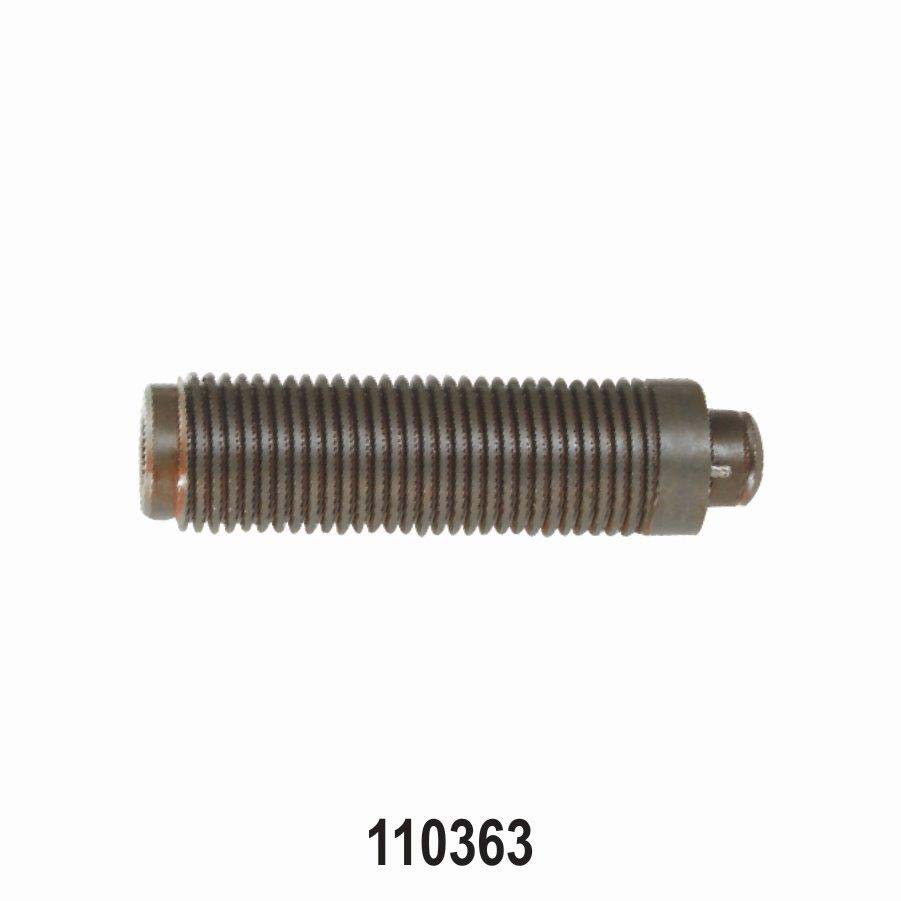A threaded shaft, commonly referred to as a “stud,” is a long rod that has threads on both ends and may have threads that run the entire length of the rod. They are made to be used under pressure. All-thread is a common name for a shaft in bar stock form.
Threaded rods can be used for a variety of purposes, effectively acting as pins to fix or join two materials. They can be put into a variety of materials, such as concrete, wood, or metal, to either temporarily establish a stable basis while development or they may be installed permanently. They are also used to stabilise structures.
Types
As cylinder head retainers for engines, “compact” or “undercut” studs.In terms of design, stud bolts The three fundamental types of studs, often known as bolts, are “completely “Threaded stud bolts,” “tap-end stud bolts,” and “double-end stud bolts” have been designed with many uses in mind. They can be used in many different ways, to create furniture or other industrial parts. Fully threaded studs feature a complete body covered with threads to allow for complete interaction between the mating nuts or similar parts, as the name implies. When double stud bolts have identical threading length at both ends, tap-end studs feature threads with different thread engagement length at the extreme fringes of the body. In addition to this, there are double-end studs with shortened shanks for particular fastening applications and fully threaded stud bolts for flanges, which have chamfered ends.
There are two sorts of studs for those that are not entirely threaded: full-bodied studs and undercut studs. The shank of full-bodied studs is the same size as the thread’s main diameter. The shank of undercut studs has the same diameter as the pitch of the lead screw. Axial stresses are better distributed by undercut studs. The threads of a full-bodied stud are under more tension than the shank is.
So because material is “rolled” up to the primary diameter rather than being removed, undercutting screws (wrapped thread) are also stronger. This keeps the steel’s grain intact and, in certain circumstances, even improves it. Although metal is removed to make the thread, which disturbs the steel’s grain, complete studs (cut thread) are weaker.
Only in cases where the stud is subject to fatigue are undercut studs necessary. Even though rolling threads might be a tiny bit stronger, cut threads are perfectly acceptable for many purposes. Conventional bolts and studs that are produced in large quantities are often rolled, but rag doll parts with unique characteristics and smaller batch sizes are more inclined to be cut.
The standard strength class is indicated on the ends of metric threaded rods by a colour code. As for the colour codes:
Unregistered — 4.6 class Yield strength: 240 N/mm2, tensile strength: 400 N/mm2.
The colour yellow is 8.8 (800 N/mm2, 640 N/mm2).
Red and A4 stainless steel; Green, A2 stainless (304) (316)
White: 10.9 grade (1000 N/mm2, 900 N/mm2).
Threaded rod made of stainless steel has numerous applications
These connectors can be used to attach wooden or metal objects together, serving as a pin to join the two materials. • For use as well most normal sized fasteners.
They can be used to anchor a variety of constructions, including wood panels to concrete walls, and are frequently placed into marble or wood during repairs.
Threaded rods may also be used by builders and contractors while erecting houses or other kinds of structures.
When designing metal furniture or consumer goods, metalworkers typically use these threaded studs.
To serve as a temporary drop ceiling.
For special-purpose machines that demand accurate alignment.
Bending a threaded rod
Once it has a reddish hue, stainless thread rod can be bent to suit any application. The ability to reheat stainless steel rods as many times as necessary to conform to the correct shape is their best feature. Follow these instructions to bend a threaded rod. Before you start, put on safety equipment.
You will require:
Two 12 to 34-inch-diameter bolts, an oxyacetylene or propylene torch, and a securely placed bench vice
Procedure: adds Significance the rods in the vice where you want the bend to be; • Space the 2 screws on your grip an inch apart; • Tighten bolts enough.
Start the torch, then heat the area around the rod.
The rod will become bendable when it takes on a reddish hue.
If the shaft stiffens, you may need to apply more heat.
Cutting a threaded rod
You’ll require a bench vice.
An angle grinder with a cut-off wheel made of metal sharpies
Procedure
Using a Sharpie, indicate the area you want to cut.
Fix the bolt’s head in the vice.
Start the end mill and make a flat angle cut through the rod.
Prior to cutting off the end, put the nuts on the bolt.
A stainless steel threaded rod has many advantages
Excellent corrosion resistance; it can be utilized in the port area without rusting or degrading.
Threaded rods are incredibly resilient and appropriate for a wide range of uses.
Prolonged life span
Stainless steel rods may be bent to fit your application and are versatile.
The rods are suitable for use in sterile areas and have a good aesthetic appeal.



